Each Military Branch has terms/slang words that may not make sense to a civilian or a member of a different branch.
Military terms/slang originates for various reasons and changes throughout time.
Movies and TV shows may depict terminology that was used in World War II, that is no longer referenced anymore.
It can be hard to stay current with military slang, so OMK created a list of terms/slang that are new or established, but still used, found below.
# 0-9
1MC: The overhead public address system on US Navy ships.
3rd Deck Dive Team: Mainly a Marine Corps term, meaning someone is suicidal and should dive off of the third deck.
11 Bang-Bang: Army infantryman
5 Fingers of Death: Beef franks with beans served in some MREs. Named for the number and unpleasant taste
99: Navy term meaning the information being discussed is pertinent to all personnel
100mph Tape: Standard Army green duct tape
Related Article – What is a Navy Squid? 11 Slang Nicknames For Navy Sailors
A
AAV: Amphibious Assault Vehicle
ACU: Army Combat Uniform
Ali Baba: Iraqi term for the bad guy, criminal, or insurgent
Alpha Charlie: Verbally reprimanded
Angel: Used in Iraq to refer to a soldier killed in combat
AOR: Area of responsibility
As you were: Return to your previous task or posture
AWOL: Absent Without Official Leave; leaving post without permission
Azimuth Check: A procedure designed by the Army to help soldiers assess their own well-being and readiness
B
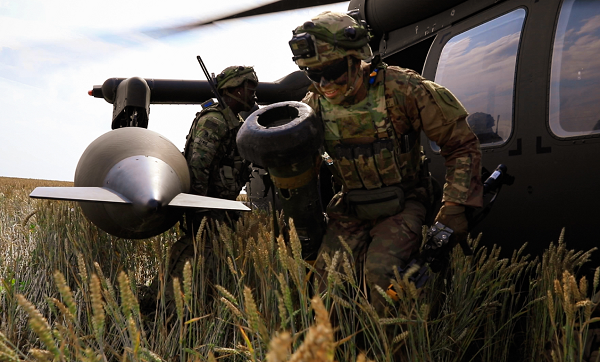
BAH: Basic housing allowance
Bang Bang: Pistol or a Rifle
Barracks Rat: Personnel who stay in the barracks during downtime
Battlefield Airman: Air Force Special Operations Command pararescue, combat control, and weather troops
Beans, Bullets, and Band-Aids: Reference to supply items such as food, ammunition, or medical supplies
Beat Feet: Move quickly
Beat Your Face: Push-ups
BFT: Blue Force Tracker; Equipment that connects with a satellite to provide locations of units as well as maps and routes
Big Voice/Giant Voice: Term used to describe the loudspeaker system on a military base. It will often make a range of announcements, such as alerting soldiers of incoming attacks, the schedule of upcoming ordnance disposal explosions, and when and where to take cover as an attack strikes. It also broadcasts Reveille and Retreat when in Garrison.
Bird: Helicopter
Blue Canoe: Portable toilet
BLUF: Bottom line upfront
Blue Falcon: Battle buddy who informs higher command of actions; tattletale
Blue-on-Blue: Refers to an attack in which soldiers are unknowingly fighting against their own side, often ending up with injuries and even death
Blue-on-Green: Similar to the ‘Blue-on-Blue’, this means your own forces are accidentally engaging forces friendly to your force.
BOLO: Usually an Army derogatory term for an individual who cannot perform a task or meet basic requirements; also can mean “be on the lookout”
Bone: B1 Bomber
Brad: M2 Bradley Armored Personal Carrier (APC)
Bravo Zulu: Good Job
Bubblehead: Personnel in a submarine
Butter Bar: 2nd Lieutenant
C
C-Wire: Razor Wire
CAB: (Army) Combat Action Badge; soldiers who perform in the infantry but do not have an infantry MOS
Cat Hole: Hole in the ground dug by a soldier to use as a bathroom
CC: Company commander
CCP: Casualty Collection Point; closest area to action where personnel are triaged
Charlie Mike: Continue Mission; continue with your task
Chest Candy: Ribbons or Medals worn on the chest of the uniform
CHU: Small container housing units on large bases
CIB: (Army) Combat Infantryman’s Badge; Award for infantry who is under fire
Clearing barrel: Dirt-filled area used to clear weapons at entry points of FOB.
Commo: Communications personnel or equipment
CONUS: Continental United States
COP: Small base in a combat area, combat outpost
CP: Check Point
Crank: (Navy) Temporary galley duty
Crypto: Code that scrambles a radio signal, or those who work in intelligence gathering
CSH: Combat Support Hospital
Related Article – Military Banned Supplements List
D
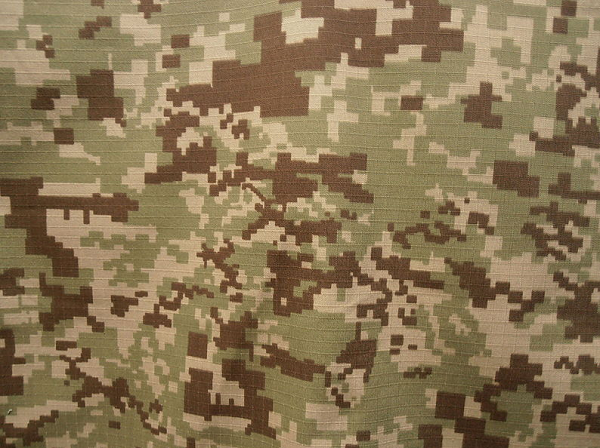
DAP: Deltoid Auxiliary Protection. Shoulder armor
Dash Ten: An army publication; usually a user or technical manual
Dear John: Break-up letter sent to a soldier from a significant other
Demilitarized Zone: Area where military forces and equipment are banned from
Dependa: Dependents of a military personnel
Detail: Referring to a usually unappealing task such as cleaning
DFAC: Dining facility
Digies: Digital Camouflage
Double Gates: The task of referring to individuals with names not of their own when around detainees
Drive On: To keep going
Dustoff: Helicopter medical evacuation
Duty Station: Location where a service member is temporarily or permanently conducting work
E
Embed: Term for a reporter who is provided security, shelter, and transportation by military personnel so they can observe and report on firsthand operations
ERB: (Army) Enlisted Record Brief; a document containing information such as rank, ASVAB details, promotion points, etc.
ETS: Expiration Term of Service; the date a soldier completes their contract
F
Farmer Armor- Improvised armor for a vehicle
Fart Sack: Sleeping Bag, or in some cases a mattress cover.
Fast Mover: Fighter jet
Fat Cakes: Unhealthy desserts or sweets
File 13: Garbage can
First Shirt: First Sergeant
Five-Sided Puzzle Palace: The Pentagon
FOB: Forward operating base; a mid-size base with basic provisions
Fobber or Fobbit- Someone who does not leave the FOB
Fourth Point of Contact: Butt; the term comes from a parachute drop in which the fourth point of contact is the butt.
Fruit Salad: Refers to the display of ribbons on a dress uniform (similar to “Chest Candy”)
FST: Forward Surgical Team
G
Galley: Kitchen on a ship
Geardo: Soldier who spends a large amount of money on military gear that is generally not needed
Gedunk: Snack Food that can be purchased, usually used by Navy sailors on a ship
Glass House: An example of a target house for rehearsing assaults
Goat Trail: Dirt road
Gofasters: Sneakers
Good Cookie: The Good Conduct Medal
Green Beans: A civilian coffee shop company common on larger bases, especially in the Middle East
Green-on-Blue: Forces “thought to be” friendly to your force accidentally, or not so accidentally, engaging your forces.
Groundhog Day: Referring to the movie by the same name, and the feeling that each day is the same during deployment
Grunt: Infantryman
Gum Shoe: Sailor Cryptology Technician
H
Haji: Indigenous Iraqi or person of Arabic descent
Hardball: Paved Road
Hangar Queen: Aircraft used for replacement parts
Hawk: Cold weather
Head: Bathroom on a ship
Helo: Helicopter
Hesco: Dirt-filled bins for absorbing explosions
High Speed: An individual who is highly motivated and at or near peak efficacy. Can be used sarcastically. Often includes “Low Drag”
HMMWV: High-Mobility Multipurpose Wheeled Vehicle
Related Article –Hoorah Vs. Oorah Vs. Hooah Vs. Hooyah: What’s the difference?
I
IDF: Indirect fire
IED: Improvised Explosive Device
Ink Stick: Pen
INTSUM- Intelligence Summary given after events happened
Iron Rations: Rations used in an emergency situation
J
Jawa- Soldiers stationed in a desert area
JDAM: A bomb dropped from a U.S. aircraft
Joe: Soldier
JOP: Joint Operation Planning; Military forces joining for operations
JTF: Joint Task Force
K
Kevlar/Kpot/ACH: Helmet
Kinetic: Violent military action
Kicks- Kilometers
Knees in the Breeze: Airborne term for exiting an aircraft
KP: Kitchen Patrol; kitchen duty
L
Lands: Raised spiral surface in the bore of a weapon
Latrine Queen: (Air Force) Term for a trainee during basic training who is a team lead responsible for bathroom duty.
Left (or Right) Flank: The far left or right edge of troops in relation to the enemy
LES: Leave and Earnings Statement; holds information similar to a civilian pay stub
Lima Charlie: Loud and Clear
M
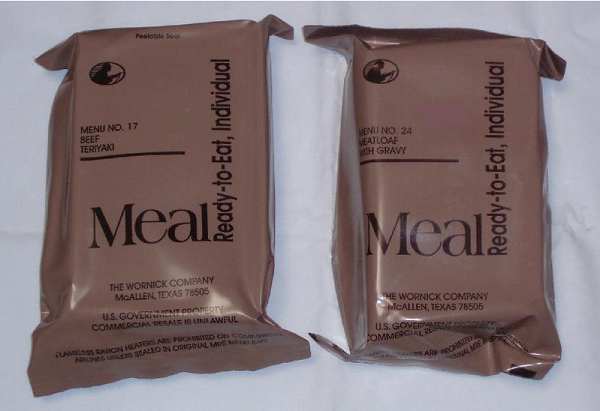
Meat Wagon: Medical Emergency Vehicle
Midnight Rats: Late night food from the chow hall
Mike: Minutes
Moonbeam- (Marines) Flashlight
MRE: Meal Ready to Eat. A vacuum-sealed meal with a long shelf life
MSR: Main supply route
Mustang: Officer promoted from enlisted ranks
MWR: Morale, Welfare, and Recreation; military department in charge of recreational facilities
N
Naval Landing Party: Navy personnel for ground-force operations ashore
Net: Radio Network
NGO: Non-government Organization
No-Go: Failure at a training station or job task
Nut to Butt: Standing very close together
O
O Dark Thirty: Early in the morning
Oscar Mike: On the Move
Oconus: Overseas; not in the continental U.S.
OCS/OTS: Officer Candidate School; Officer Training School
Officer’s Candy: Scented cake placed in urinals
OPTEMPO: Operating Tempo; the pace at which one is working
OTV: Outer Tactical Vest
P
PCC: Pre-combat check
PCS: Permanent Change of Station
People Tank: (Navy) Inner hull of a submarine
Pill Pusher: (Navy) Hospital Corpsman; or a medic
PLF: Parachute Landing Fall
POG: Person Other than Grunt. Anyone who’s not Infantry. In other words, if you ain’t Infantry you’re a POG
Pogey Bait: Tasty snacks that are not normally available to soldiers in the field
POO Site: Point of Origin site
Pond Water- The speed at which a slug / laggard is moving
Pop Smoke: To leave without being seen
PSD: Personal Security Detail
Q
QRF: Quick Reaction Force; ready to react
Quay- Man-made structure between shore and land
Quick Time: Cadence at 120 steps per minute, or also, double time march
R
Rack: Refers to a bed; soldiers ‘rack out’, meaning they go to sleep
Red on Red: Enemy on enemy fire
Release Point: A geographical point where soldiers change from central command to that of their commander
REMF: Rear Echelon Mother F**ker — a solider far from the front line
Rocks and Shoals: (Navy) Rules and regulations
ROE: Rules of Engagement
Ropeyarn Sunday: (Navy) Half-holiday
ROTC: Reserve Officer Training Corps
Rotorhead: Helicopter pilot
RTO: Radio Telephone Operator or RO-Radio Operator
Ruck: Rucksack; backpack
Related Article –Reenlistment Codes For Each Military Branch
S
Sandbox: Iraq, Afghanistan, or other desert area
Scrambled Eggs: Embellishments on Officer’s caps
Scuttlebutt: (Navy) Rumors or gossip
Sky Blossom: Deployed parachute
Smoked: Physical punishment for some sort of infraction
Snivel Gear: Cold weather gear
Soup Sandwich: Something has gone extremely wrong
Speedball: Refers to a bag dropped from a plane or helicopter for soldiers in the field that contains supplies
Spoon: A cook or culinary specialist
Squid or Swabbie: U.S. Navy member
SRB: Selective Reenlistment Bonus; Bonus offered to enlisted members as an incentive to reenlist
T
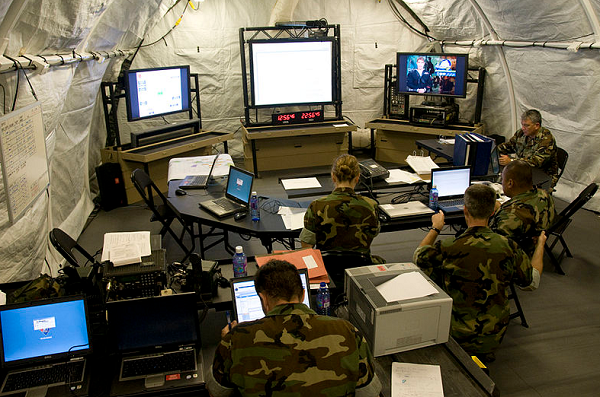
Taco: (Air Force) Receiving an unsatisfactory grade during training; shape of the letter resembles a taco shape
TAD: Temporary Additional Duty
Take a Knee: Rest
Tango Mike- Thanks much
Target Discrimination: Ability of a surveillance system to choose an individual target when there are multiple options
TCP: Traffic Control Point
TDY: Temporary Duty – refers to a short-term assignment, and is sometimes expressed as “Temporary Duty Yonder”
TIC: Troops in a contact fight; can relate to a firefight or IED
TOC: Tactical Operations Center
Turtleback: Swimming on your back to watch for direction and a compass
Twidget: Sailor who works on electronic equipment
U
UAV: Unmanned Aerial Vehicle
Underground: Individuals who support resistant movement through secret operations
Unit Identification code: Six character code that identifies military active, reserve, and guard units
UXO: Unexploded Explosive Ordnance; potential to explode
V
VBIED: Vehicle Borne IED; car bomb
Voice in the Sky: Military base broadcast announcements
Voluntold: Assignment that is presented as voluntary but is seen as mandatory
W
Weapons of Mass Destruction: Advanced weapons with the capability of causing mass destruction of casualties
Wingnut: Term for USAF members — WINGNUT comes from the shape of the Air Force E2 rank with single stripes, which looks like a wingnut.
Wire: Term referring to the base; a person is inside or outside the wire
Woobie: (Army) Issued poncho liner used as a blanket
X
XO: Executive Officer; just below the Commanding Officer
Z
Zone of Action: Small Section of the total tactical area
Zonk: Released after formation
Zoomie: Army slang for someone in the USAF, normally a pilot
Related Article –Platoon Size-How the US Army is Organized
References
ITS- Military Acronyms, Terminology
- Replacing Dog Tags: 6 Things You Need to Know - June 28, 2024
- Navy OAR Test Study Guide - June 24, 2024
- 10 Best Sniper Movies of all Time - June 20, 2024
Originally posted on December 2, 2019 @ 4:44 am
Affiliate Disclosure: This post may contain affiliate links. If you click and purchase, I may receive a small commission at no extra cost to you. I only recommend products I have personally vetted. Learn more.
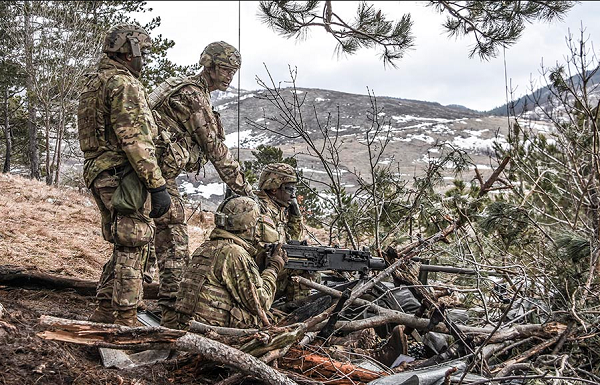

Rob
The USAF term WINGNUT comes from the shape of the E2 rank with single stripes, which looks like a wingnut.
Thanks for that William, just got it changed up.
Rob V, thought of a couple more:
Knees in the Breeze – Airborne term for exiting an aircraft.
No-Go — Failure at a training station or job task
PLF — Parachute Landing Fall
Thanks for those Robert, just got them added.
Rob V.
Owner / Founder
OperationMilitaryKids.org
Rob V, these are all really good but POG stans for Person Other than Grunt, meaning anyone who’s not Infantry. In other words, if you ain’t Infantry you’re a POG. Said pōg.
Also, you’re missing Blue on Blue, meaning, from the speaker’s perspective their own military accidentally fighting another element of its own forces.
Blue on Green meaning your own forces accidentally engaging forces friendly to your force.
And Green on Blue meaning Forces “thought to be” friendly to your force accidentally, or not so accidentally engaging your forces. (See the February 17th Militia, Sep 11 2012, Benghazi)
Thanks for that Galen, just made the updates. I appreciate it!
Rob V.
OMK Founder
Oscar Mike- on the move